Christmas cactus, Schlumbergera spp., is an easy-care houseplant that rewards with a profusion of holiday blooms.
In our Christmas cactus growing guide, we talk about best practices for indoor cultivation.
Additional articles address inducing dormancy to encourage blooming, as well as understanding aerial root development.

We link to vendors to help you find relevant products. If you buy from one of our links, we may earn a commission.
Read on to increase your knowledge of this plant even more as we explore potting mixes and the ingredients that are most beneficial for your Christmas cactus plant.
What You’ll Learn
Let’s start with a glimpse at Schlumbergera in the wild.
The Christmas Cactus in Nature
The natural habitat of Schlumbergera species is the rainforests of South America.
They are epiphytes, plants that use their roots to cling to other plants or rocks for support, while doing no harm to their host.
Their sole sources of sustenance are the air, rainfall, and leaf litter that collects around them.
And although one might think that tropical flora thrives on constant moisture, the roots of Christmas cacti need to be well aerated, so they never oversaturate and rot.
Potting Mix Essentials
Once we understand the conditions under which a plant grows in nature, we can begin to replicate the environment for indoor gardening.
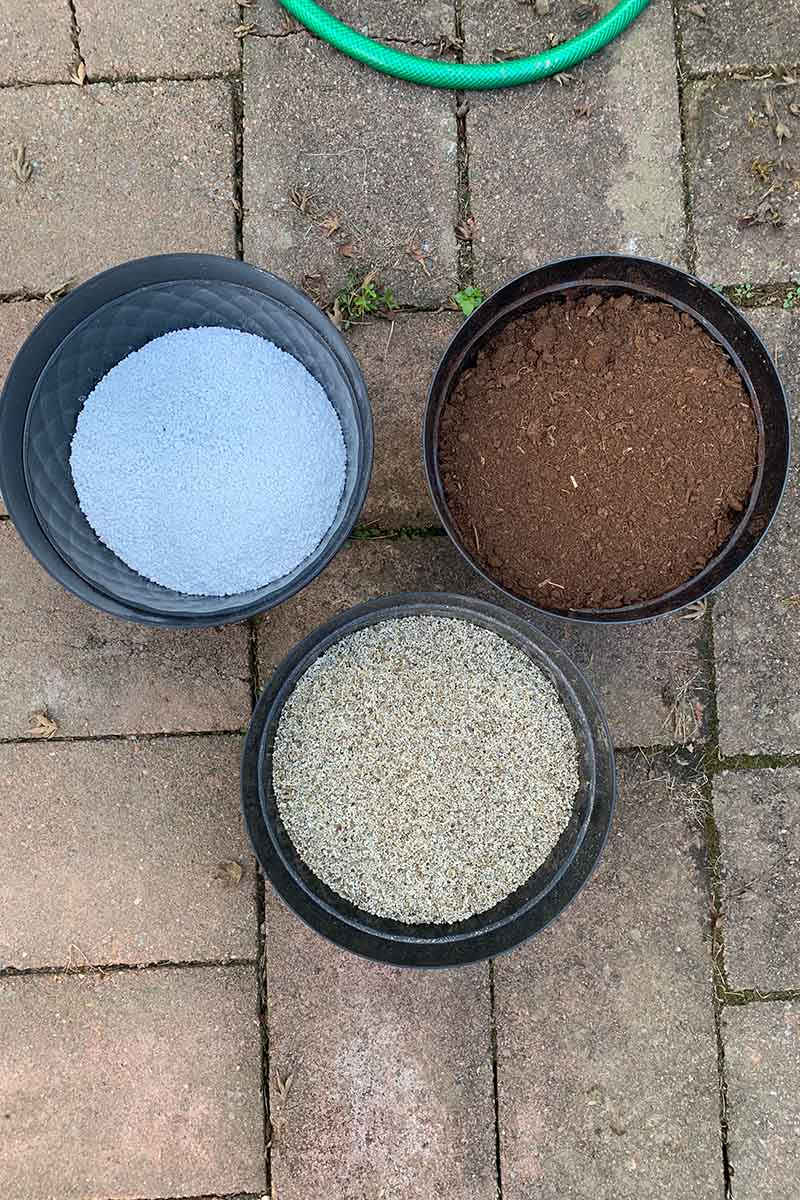
For the Christmas cactus, this means that we need to meet four basic needs:
- Provide support in the form of a pot and substrate, such as soil or a soilless potting medium, to hold plants upright.
- Supply nutrition because there is no leaf litter.
- Deliver water, as there is no rainfall.
- Inhibit oversaturation via optimal airflow and adequate drainage.
These requirements can be fulfilled with proper care and a combination of appropriate substrates with or without a soil base.
A Soil-Based Approach
When you buy a plant, it’s growing in a medium that has supported its growth to this point.
And while Schlumbergera likes to be snug and even a bit root bound, there may come a day when you want to give yours a bigger pot, or refresh the medium in the current pot.
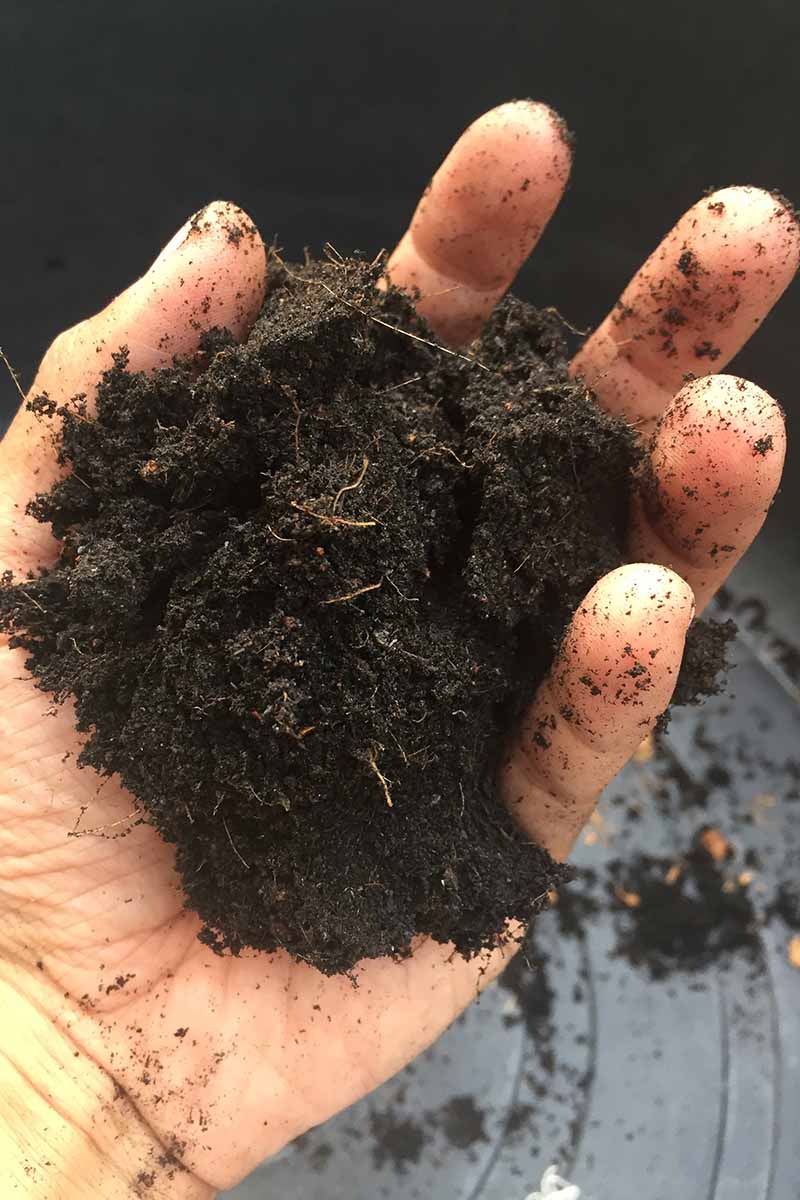
Now before you head out to the garden for supplemental soil, consider this:
Ground soil can be used for your Christmas cactus, but it may be deficient in nutrients and heavy in consistency, and will require some amendments.
The horticultural pros at New Mexico University recommend amending it with organic matter such as compost, as well as sand or fine gravel, to enrich and loosen it, so that it drains well.
In addition, they suggest heating the soil (in an outdoor location because it will have an odor) at a temperature of 160°F for 30 minutes to sterilize it before use. The sterilization process inhibits pests and diseases that may pose a threat to plant health.
A useful formula for a soil-based potting mix is:
- 1 part sterilized soil
- 1 part compost
- 1 part sand or fine gravel
Combine thoroughly and fill a pot that has holes in the bottom for drainage.
This is an airy, balanced, organically-rich blend that drains exceptionally well. It is unlikely to harbor pests, diseases, or weed seeds after sterilization.
An alternative is to go soilless.
Soilless Resources
You can avoid soil altogether by making a lightweight combination of substrate materials that nourishes, allows air to circulate, and drains well.
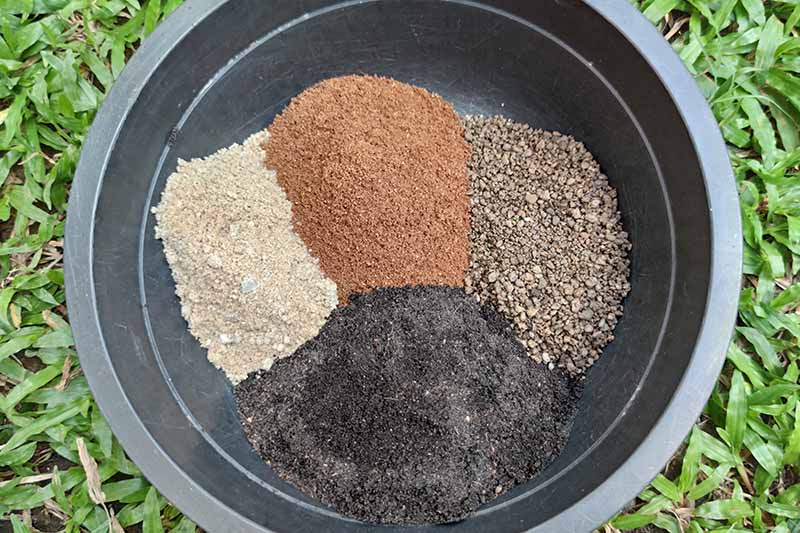
Organically-rich mediums like compost, peat, and worm castings are rich in nutrients, but they can be quite dense.
Amendments such as perlite (a volcanic rock), sphagnum moss, and vermiculite (a mineral), are widely used to turn dense matter into a fluffy blend loaded with air pockets that drains well, while still retaining an ample supply of water.
Coconut coir in the form of chopped coconut husks is another common additive that creates gaps for airflow and drainage, and it also absorbs copious amounts of water.
And finally, fir and pine bark also facilitate airflow and drainage, but neither retains as much water as the other materials. This is advantageous for an epiphyte that is unused to perpetually wet pot life.
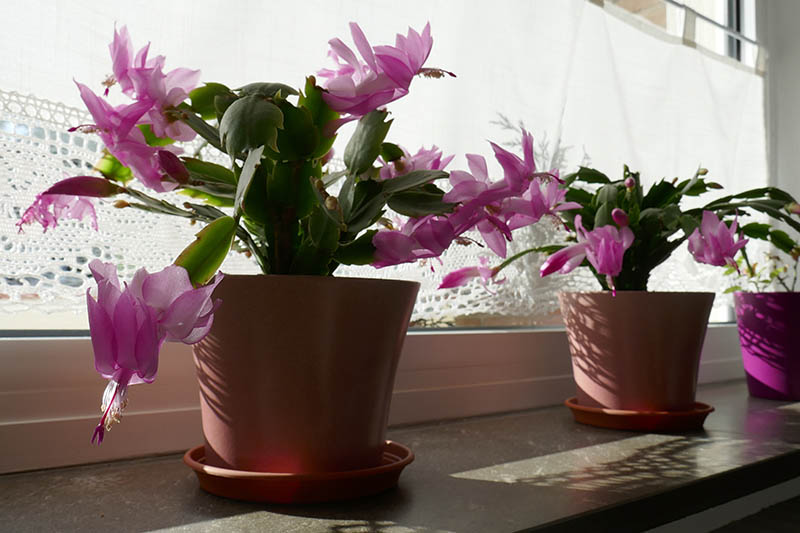
When added to amended organically-rich matter, materials such as charcoal, fine gravel, horticultural pumice, and sand can help to further loosen, aerate, and drain.
Another element that often supplements substrate blends is limestone. It regulates the pH when acidic organic matter like peat and bark are present. Christmas cacti require a moderately acidic pH, in the 5.7 to 6.5 range.
When you browse garden center shelves or shop online, you’ll be bombarded by products with various combinations of the ingredients listed above. Among them, you’ll find concoctions specifically designed for cacti and succulents, as well as orchids.
It would be natural to gravitate toward a cactus and succulent option, but Schlumbergera is a rainforest epiphyte, not a desert cactus. This type of product usually contains perlite or vermiculite, the water hogs of the amendments.
Moving along in your shopping, you’ll find options designed for orchids. Most orchids are also epiphytes, and products for them generally contain coconut coir or bark chips.
Bark is the quickest drying of the water-absorbing materials. Both bark and coir disintegrate and compact over time, but work well when combined with other ingredients.
Why not take advantage of the best features of products made for both cacti and orchids, and adjust their tendency to oversaturate with a third additive?
A handy formula for a soilless potting mix, ideal for your Christmas cactus is:
- 1 part cactus and succulent mix
- 1 part orchid mix
- 1 part horticultural pumice, sand, or fine gravel
Thoroughly combine and fill a container with adequate drainage holes.
This blend is texturally-rich, so it’s airy and lightweight. This gives the roots room to breathe, and excess water drains away with ease.
Where to Buy
Ready to make your own soilless potting mix? Here’s where to get the ingredients:
There are numerous cactus and succulent products available, but I particularly like Tank’s-Pro Cactus and Succulent Mix.
Tank’s-Pro Cactus and Succulent Mix
This product combines horticultural pumice, coconut coir, and organic compost.
Find Tank’s-Pro Cactus and Succulent Mix now in 1.5-cubic foot packages from Arbico Organics.
For the orchid mix, this all-natural product contains a mixture of charcoal, coconut chips (coir), pine bark, and sponge rock (perlite).
Find all-natural Orchid Potting Mix now in 4-quart packages from Perfect Plants.
And to optimize aeration and drainage, horticultural pumice is an ideal option.

You can find Horticultural Grade Pumice now in 2.5-dry-quart packages from the Succulent Cult via Amazon.
A Custom Fit
It’s just like with people. Sometimes, one size just doesn’t fit all – especially when your name says cactus, but you’re really an epiphyte unaccustomed to having your feet in the dirt, let alone when it’s wet. Geez!
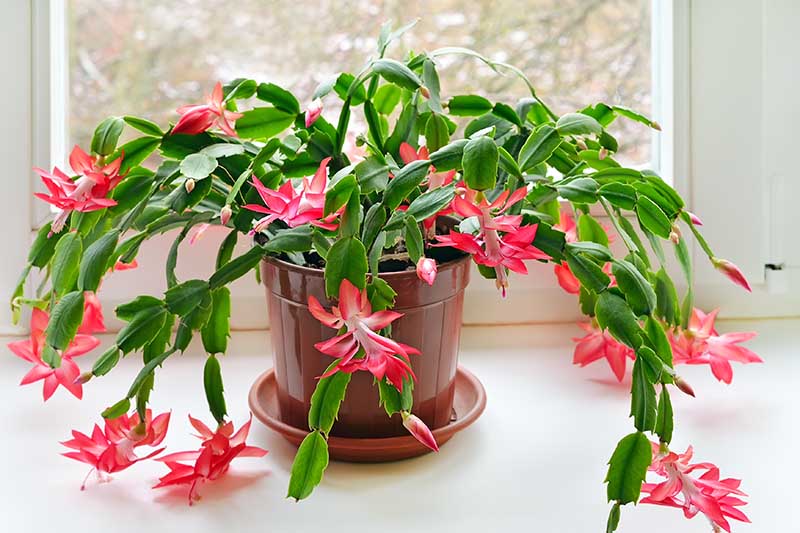
With a nutrient-rich, aerated, well-draining substrate for support and sustenance, tailored specifically to its needs, your Christmas cactus can enjoy its best indoor life.
Do you use a soil-based or soilless potting mix for your Christmas cactus? Share your tips in the comments section below!
If you found this article informative, you’re sure to enjoy these additional articles on Christmas cacti next:
- How to Identify and Control 7 Common Christmas Cactus Pests
- Is Christmas Cactus Toxic to Cats?
- Why Is My Christmas Cactus Turning Purple?
© Ask the Experts, LLC. ALL RIGHTS RESERVED. See our TOS for more details. Product photos via Arbico Organics, Perfect Plants, and The Succulent Cult. Uncredited photos: Shutterstock.
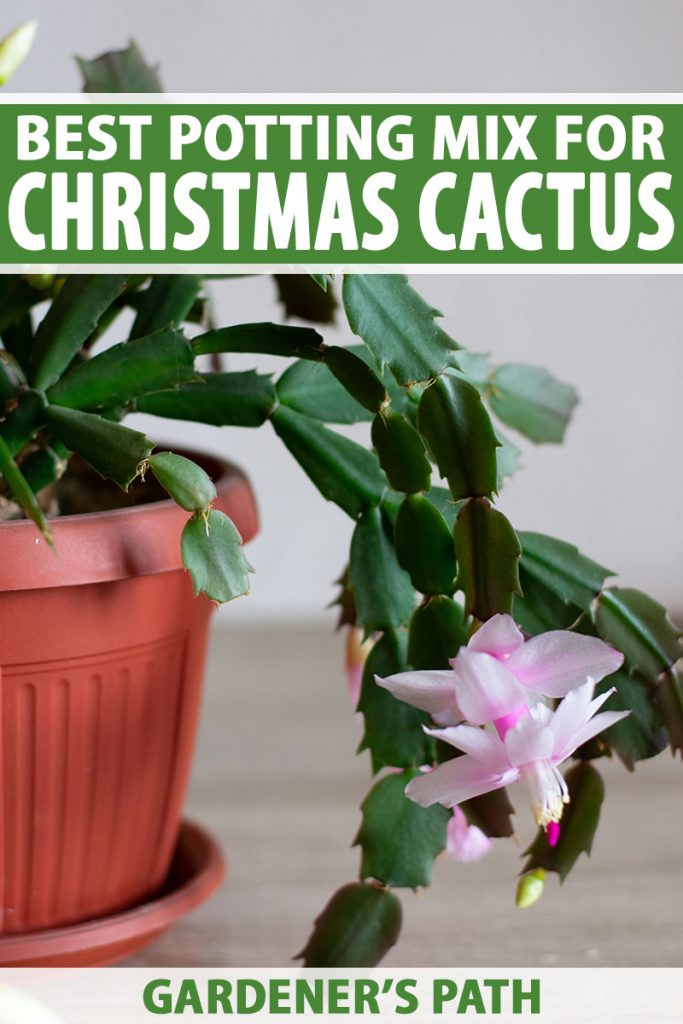
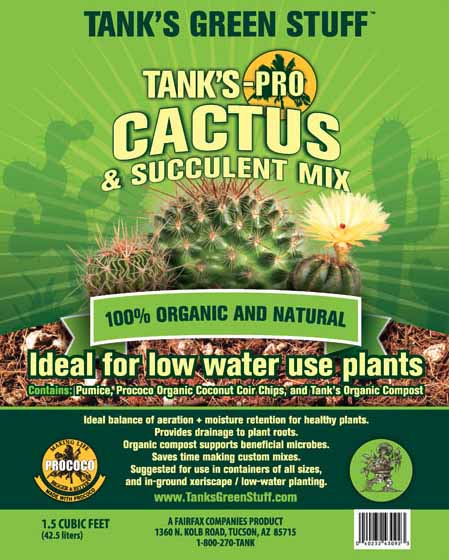

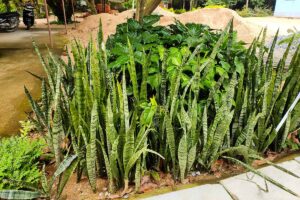


Hi Nan, Thank you so much for the article! I hate to go too far afield, but every time I water my orchid cacti (Epiphyllum), I wonder if I should give them a lot of water or not. Since they are also epiphytes, do you know if they would benefit from the same kind of mixture that you recommend for the Christmas cacti? Thank you so much for any advice!
Hi Helga –
So glad you enjoyed the article. Wait until your orchid cacti are dry about two-thirds of the way down, and then water deeply before they completely dry out.
As with Christmas cacti, use a potting mix that is organically-rich, and contains moisture-retaining matter such as perlite, coir, or fir bark, as well as gravel, pumice, or sand to promote aeration and drainage.
When to transplant?
Hi Paula –
The best time to transplant a Christmas cactus is just after it finishes blooming.
Nan, I have 2 Christmas Cactus. One was propagated from the Mother plant. The mother plant was my great grandmother’s, passed on to her daughter, my grandmother, to my mother then to me. It may be close to a hundred years old. I trim both plants back once a year after Easter. Both of my plants have two annual blooms. One in December around and through Christmas, then again at Easter. My question has to do with watering. Our plants get watered once a week. With a cup of water (RO water) near the stems of the plants. Are we… Read more »
Hi Norm –
It’s wonderful to have an heirloom plant!
Generally, when the top third of the soil is dry, usually every few weeks, it’s time to water. However, different environments, potting soils, and the plants themselves affect how often moisture is needed.
Old, woody stems are normal signs of aging. Please see our article on woody Christmas cactus stems for more information.
I have a 150 – 200 year old Christmas cactus that was my Grandmother’s it didn’t bloom at all last year , I don’t think it was in a dark enough place in my apartment I’m going to make sure it gets the right day -night hours this year . I just did a new pot for a friend . It’s my first attempt at new starts . I wanted to thank you for sharing your knowledge or these awesome plants with everyone it is deeply appreciated.
Hi Michael –
Wow! We love to hear about the grandes dames of the Christmas cactus world. We’re so glad you have found us here on Gardener’s Path and the article has been helpful.